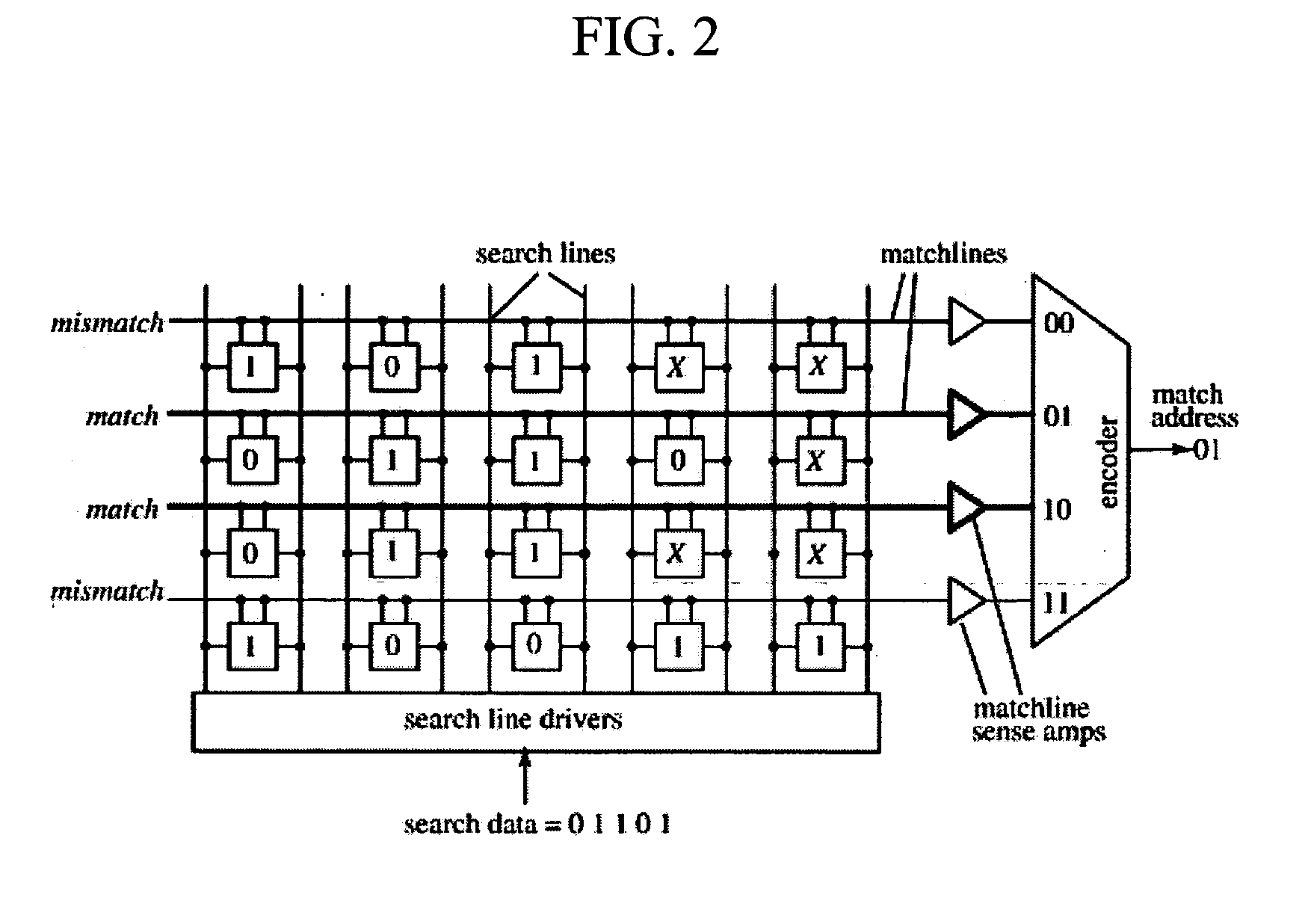Methods for nucleic acid and polypeptide similarity search employing content addressable memories
a content addressable memory and nucleic acid technology, applied in the field of gene therapy, can solve the problems of lagging ability to organize, analyze and interpret sequence information archives into biologically relevant contexts, and increasing complexity
- Summary
- Abstract
- Description
- Claims
- Application Information
AI Technical Summary
Benefits of technology
Problems solved by technology
Method used
Image
Examples
Embodiment Construction
[0013] This invention is directed to systems and methods for comparing the similarity of biopolymer sequences. Sequence similarity or alignment routines are important to the fields of genomics, proteomics and bioinformatics as well as for the production or improvement of biopharmaceuticals and pharmaceuticals. The system and methods of the invention provide hardware, algorithms and processes employing content addressable memory (CAM) for the rapid and efficient determination of single or multiple sequence comparisons. The CAM-containing system and CAM-based methods of the invention can provide advantages over current alignment algorithms such as local, global or heuristic local searches because they are rapid, associative, and provide simultaneous searching of content in a single or a few clock-cycles. Additionally, the CAM-containing systems and CAM-based methods of the invention are flexible and modular to allow expansion or contraction of memory size to suit essentially any desir...
PUM
 Login to View More
Login to View More Abstract
Description
Claims
Application Information
 Login to View More
Login to View More - R&D
- Intellectual Property
- Life Sciences
- Materials
- Tech Scout
- Unparalleled Data Quality
- Higher Quality Content
- 60% Fewer Hallucinations
Browse by: Latest US Patents, China's latest patents, Technical Efficacy Thesaurus, Application Domain, Technology Topic, Popular Technical Reports.
© 2025 PatSnap. All rights reserved.Legal|Privacy policy|Modern Slavery Act Transparency Statement|Sitemap|About US| Contact US: help@patsnap.com



